#thieves' cant
Explore tagged Tumblr posts
Text



That's gay
#plinchy draws#storm song#thuel#thunder#noel#mistletoe#thieves' cant#bardxrogue#dnd oc#dnd#christmas#12 days of yurimas#wlw#sapphic#gay
15 notes
·
View notes
Text
everyone say thank you to green's dictionary of slang (and thieves' cant of course)
hey boy don't kill yourself. green's dictionary of slang is available online and allows you to explore 500 years of english vulgarity. you can search by part of speech, source, time period, etymology, and usage. there's a whole category for gay slang. they even have specific citations listed so you can see the exact context for yourself. boy did you know that in 1927 "to kneel at the altar" was slang for "to sodomize"
29K notes
·
View notes
Text



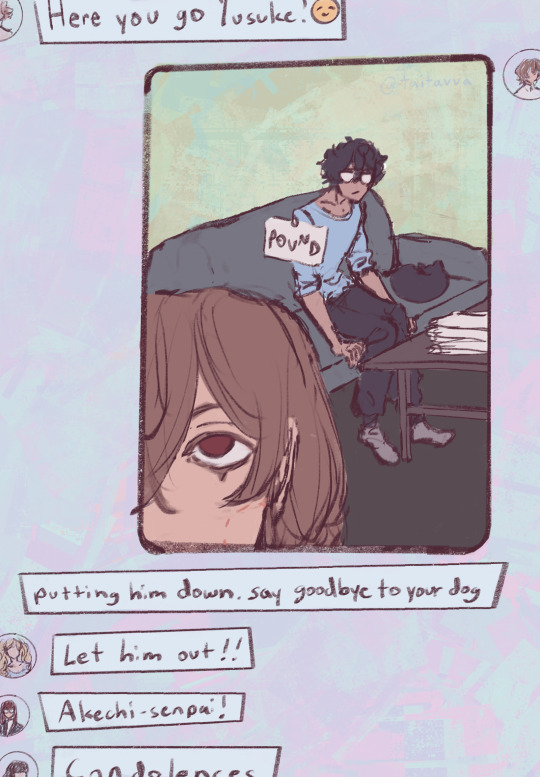
when im in a worst roommate ever competition & my opponent is joker persona 5 royal 🙄
#cant get anything done w/ him around#akechi: most beleaguered college student#LITERALLY ME RN !!!#sorry ....#guess who was passing away for the past two months#this semester hit me like a TRUCK#no time orz for anything .....#persona 5#p5#persona 5 royal#p5r#procreate#2024#goro akechi#persona 5 protagonist#ren amamiya#akira kurusu#phantom thieves#shuake#akeshu#6.5 hours#i havent drawn them in so longgg#ill try to drag up some sketches to avoid disappearing for weeks on end
3K notes
·
View notes
Text



kaito screencap redraw! plus my favorite panel from the scarlet return arc lol
I've been reading detco for like 2 years and the unhealthy obsession fanart motivation finally caught up
(no reposts; reblogs appreciated)
#my art#artists on tumblr#fanart#digital art#dcmk#detective conan#detco#case closed#kaitou kid#magic kaito#kuroba kaito#first pirates and now thieves#why is it always the fictional wanted criminals that get to me#although i must say#it’s objectively not a great time to get into this fandom#cousin gate…#i watched from up on poppy hill right after i found out about it and i was so scared lol#like please. you can’t do this to me twice in a row#been sketching a lot and not finishing anything lately (art block??)#so ty kaito for pulling through#guys i cant believe he stars in 2 shows#am i crazy or does he kind of resemble oikawa#oh and that last panel always makes me laugh#stay silly
1K notes
·
View notes
Text
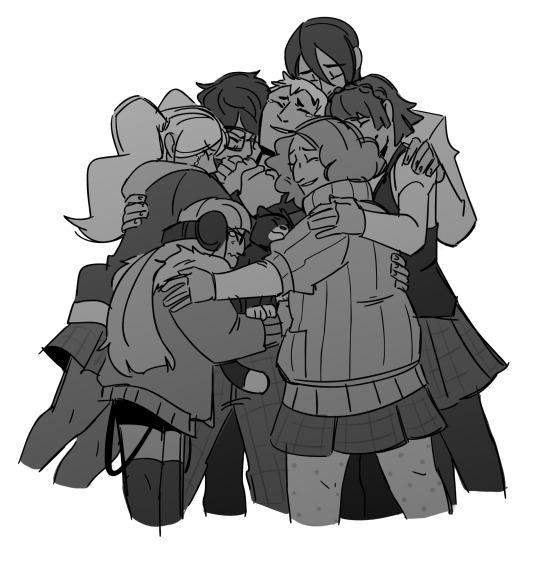
Maaaaan, that was close...
#persona 5#p5#p5 fanart#phantom thieves#my art#holding atlus by the neck LISTEN. you cant make your character's whole deal the fact that he's a survivor of abuse and then use him as a#as a literal punching bag as a joke. you cant. the joke doesnt fucking land and i WILL kill you.#anyway everyone should've rushed to hug ryuji in absolute relief when they saw him and then thank him for what he did#and congratulate him on his great running cause he's been working so SO hard to get back to that point and he deserves the praise
2K notes
·
View notes
Note
strange aesthetic thoughts I'd like your opinion on.
imagine if you will, a thief or bandit group with a specific type of dye for their equipment, most don't pay it any mind, hell without the right lighting it's invisible, but put them into said lighting and their outfits, tools, ect light up with bright, almost glowing patterns. shine the same light on different buildings and you may find similar patterns on them, invisible to the naked eye and looking close to graffiti to the uninformed.
these markings however, are not random. combinations of colour and symbol are used to denote where is safe, where isn't. if guards are known to patrol here or not, or the obvious "protected client raid and regret"
Thieves' Cant signs 2.0! That's a great idea!
I think needing a special dye (like invisible ink, right?) and a special light (a lantern with a filter of a given colour perhaps) to make it work kinda gatekeeps the whole thing.
Real life hobo signs (and fantasy signs, like Skyrim's Thieves Guild Shadowmarks) can be written with anything, chalk, coal, whatever you got. And they can be read by anyone who knows what to look for. Obscurity makes it work: they're just too small and mundane to take notice.

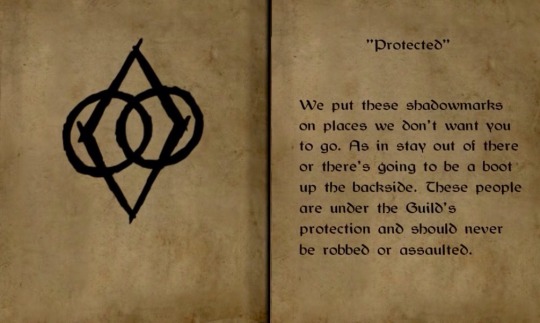
So perhaps something that elaborate is only available to the gang, and no one else has the knowhow to replicate it.
36 notes
·
View notes
Text
Now that it's 11/23, happy shuake holiday to this insane line

Akechi: “Haha I romanced the leader of the phantom thieves~❤"
Phantom Thieves: *grumble grumble*
Joker, half dead: “okay guys, here’s how shuake can still work—"
#i cant even imagine what joker's reaction to this would be. every possibility is funny asf#11/23 might be one of the lesser-known shuake holidays but still one i lost my mind over when i first played#my post#shuake#persona 5#persona 5 royal#p5#p5r#goro akechi#akira kurusu#p5r akechi#p5r akira#phantom thieves#p5r phantom thieves
382 notes
·
View notes
Text
raven cycle this raven cycle that BLUE KISSED NOAH AS A SYMBOLIC PARALLELISM OF THE RELATIONSHIP BETWEEN HER KISS AND DEATH. HER FIRST KISS WAS DEATH. DONT TALK TO ME DONT LOOK AT ME DONT GO NEAR ME I CANT I REALLY CANT OH MY GOD
#i cant. i really cannot. i am unable to can.#IM SCREAMING#the raven cycle#trc reread#the raven boys#the dream thieves#blue sargent#noah czerny#richard gansey#ronan lynch#adam parrish#cabeswater
1K notes
·
View notes
Text
See Michael Crichton’s novel “The Great Train Robbery” where thieves’ cant often appears in dialogue. It’s been a while since I read it, but IIRC a lot of the terms weren’t Info-dump-explained but were (or became) clear in context.
Also check out Back Slang, Pig Latin and particularly Polari, made famous by Julian & Sandy in “Round the Horne”. This radio show assumed - correctly* - that many of their audience were both more dirty-minded and more wordly-wise than would ever be admitted in public.
“Bona to vada your dolly old eek,” etc.
*****
* Another example from the old-time talking-type wireless: “The Goon Show” occasionally sneaked in bits of naughty Army slang such as the “Jodhpur Hooded Cobra” and characters like “Justin Heidelberger” and “Major Hugh Jampton (excused shorts)”.
One is a species of trouser snake, the others are Just an Idle Bugger and Huge Hampton. Since “Hampton” is rhyming slang derived from London district Hampton Wick, with a meaning that should stick out a mile be fairly obvious, the problem about wearing hot-weather uniform is, or rather isn’t, there for all to see.

When complaints came in, some were from old soldiers who recognised such language, while others were from old soldier’s wives who shouldn’t have but clearly did.
Innuendo meets outuendo or possibly intheknowendo.. :->
*****
Polari also appeared on the Discworld, as Terry said himself:
"A certain amount of DW slang comes from Palari or Polari, the fairground / underworld / theatre 'secret language' (which seems to have a lot of roots in old Italian). UK readers with long memories might recall the pair of gay actors 'Julian and Sandy', in the old Round the Horne radio show in the Sixties and Seventies (innocent times, innocent times); they spoke almost pure Palari."
Polari-Palari was / is also spelled Parlayaree.
This does NOT imply association with Nuckelavee, and the management accepts no responsibility for any unpleasantness caused by mistaking one for the other.
Rogue Week: Thieves Cant

image credit: Ron Spears
Thieves cant is essentially a secret code shared between thieves. In Dungeons & Dragons, this is a way for rogues to roleplay with NPCs of the criminal underbelly of their world. Here, I’ve outlined or given examples of thieves cant to help you create your own ideas for your campaigns or characters. In the final section I’ve written up some new thieves cant for D&D-specific terms.
Thieves Cant
Thieves Cant is a conglomeration of many languages but mostly a mixing of Romany and English. I couldn’t tell you the origins of each of these slang terms because I simply don’t know them. Many dictionaries for thieves cant have been printed and reprinted since the 1500s as normal folks struggled to keep up with the ever-evolving language. I’ve compiled a list of real-world thieves cant terms that might appear in your D&D campaign. All words here are taken from The Lexicon of Thieves Cant by Shaun Haley, which is the most exhaustive I could find online.
Alarm (to sound the alarm): cry beef
Bribe: dawb, grease, hush money
Brothel: academy, snoozing ken
Building/House: ken, panny
Crowbar: bess, betty, ginny, jimmy
Danger: lay
Daytime: lightmans
Gullible Person: cull, gull, gudgeon, pigeon
Innkeeper: bluffer
Lock Pick: charm, dub, kate, screw
Man: cove
Money: blunt, caravan, iron, lowre, plate, pony, rag, ready, rhino, ribbin, wedge, king’s pictures
Murder: hush
Nighttime: darkmans
Receiver of Stolen Goods: family man, fence
Sleight of Hand: fam lay, paum
Steal: bite, cloy, curbing law, heave, hoist, lift, nim, prad lay
Suspicion (to realize something is up): twig
Tavern Owner: beggar maker
Thief: angler, napper, prigger, nipper
Thieves Guild Hideout: stop hole abbey, stuling ken, stalling ken, flash ken, fencing ken, dive
Thieves Guild Leader: dimber damber, upright man, arch rogue, prince prig
Thieves Guild License: (permission to work thieves guild turf) jukrum
Thieves Guild Member: made man
Veteran Thief: old hand
Woman: mort, mot
Cockney Rhyme
Keep reading
1K notes
·
View notes
Note
*samael is still sniffling in the corner. she hasnt moved since michael entered the room*
((( aka, you stopped responding and i still have lore ideas ::::3 /silly )))
- @the-archangels7
*He's busy with healing Threat. for the most part.*
so... think they're gonna chop off a wing... or something?
345 notes
·
View notes
Text
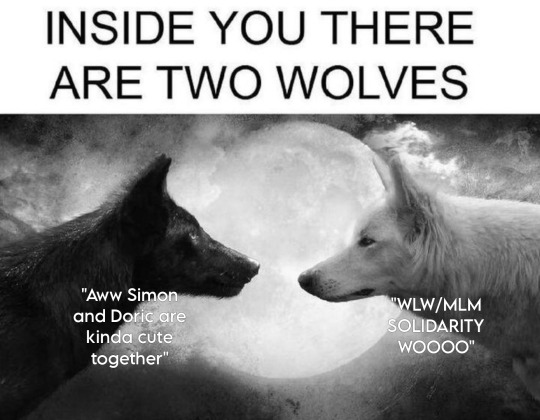
#I cant help but hc every Sophia lillis character as a Lesbian and every Justice Smith character as Queer#what am i supposed to do 😭#d&d: honor among thieves#dungeons and dragons honor among thieves#dungeons and dragons#dungeons and dragons: honor among thieves#dnd#dndhat#d&dhat#d&d#simon aumar#simon the sorcerer#doric the druid
1K notes
·
View notes
Text
I found the digital deluxe character sheets....
did....did y'all know Astarion speaks... not only abyssal but also. orc?

Gale;

Karlach;

Lae'zel;

Shadowheart;

Wyll;

#bg3#baldur's gate 3#little mr overachiever here knowing 5 languages??#like i EXPECTED common elvish and thieves cant#but why tf abyssal? and orc?#also gale??? speaking giant?#the fanfic possibilities with this......
603 notes
·
View notes
Text
I love thieves’ cant, but it has literally never come up in a single D&D game I’ve ever played.
I’m designing a D&D style TTRPG, so while writing the rogue class I wanted thieves’ cant to be actually useful during exploration and social interaction. Here’s what I’ve got:
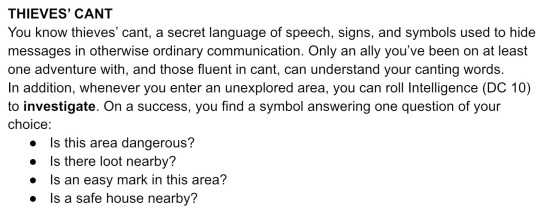
This more closely aligns with how I imagine thieves’ cant should work in fiction, and looks genuinely fun to use at the table!
554 notes
·
View notes
Text
"Thieves' Cant" is a misnomer
An old post of mine got deleted, and I remembered that tumblr nuked the OP's account (epicdndmemes IIRC) so maybe they also nuked everything they ever posted and all the reblogs? Idek, they posted d&d memes for pete's sake. In any case, yay for archiving stuff, here's the rescued text. The op's meme (sadly not rescued) was claiming that all d&d rogues MUST be criminals, otherwise they wouldn't know thieves' cant and how to use thieves' tools. A narrow-minded and unimaginative take which made me go off and
Oh for the love of fuck.
Stop thinking of thieves’ cant (which is a real thing, not a D&D invention) as a jargon of Thieves, and start thinking of it as a jargon of People in the Margins: petty thieves (the big ones live in mansions and speak on a higher register, not cant), gamblers, sex workers, vagrants, beggars, performers of all sorts (actors, acrobats, buskers, carnies etc), slum dwellers, peddlers, itinerant and migrant workers of all sorts, whatever minorities have reason to mistrust the law, and whatever professions are considered disreputable or “unclean”. In a word: rogues.
Cant’s purpose is to be unintelligible to respectable law-abiding god-fearing outsiders, because if you’re in the margins, these folks are dangerous. (They’re also potential marks for your scams, sure, but cant is primarily a defence mechanism.) That doesn’t mean it’s magically unintelligible to outsiders. Anyone associating with this underworld can potentially learn it, or at least parts of it. And in fact, all cant dictionaries were written by respectable law-abiding god-fearing outsiders.
So in order to speak Thieves’ Cant, your Rogue can be criminal, or criminalised, or otherwise marginal, or someone who has associated with these elements enough to pick up the lingo. You’re not required by law to be an urchin -> pickpocket -> thieves’ guild member, geez.
As for thieves’ tools, it’s a toolkit used by burglars, locksmiths, investigators, cops, spies, activists, revolutionaries, and lockpicking lawyers amateurs who like a puzzle. Your Rogue can be any of these, or somehow related to any of these. It’s not even a stretch of the imagination, geez.
55 notes
·
View notes
Text



#gasa4#gasa4 cashier#gasa4 dummy#special toastabi goods#i cant be bothered to watermark this. art thieves do whatever
32 notes
·
View notes
Text
so on the one hand, Travis's "we need a rogue, can we have another brother?" goof upon encountering the lockbox in PTTM was definitely meant to be out of character, directed at his real family and not at Merle or Taako. but on the other hand, I still like to imagine Magnus saying it in universe...
because Merle and Taako are his family, of course, but also because it hits a little different once you think about Barry knowing Thieves' Cant :')
#it's so funny that clint made a “you do have a secret brother” goof in that moment because like. yeah that's barry!#that's their brother! he's gonna join the party and speak thieves cant and *literally* open doors where they cannot!#taz#taz balance#taz balance spoilers#magnus burnsides#barry bluejeans#merle highchurch
331 notes
·
View notes